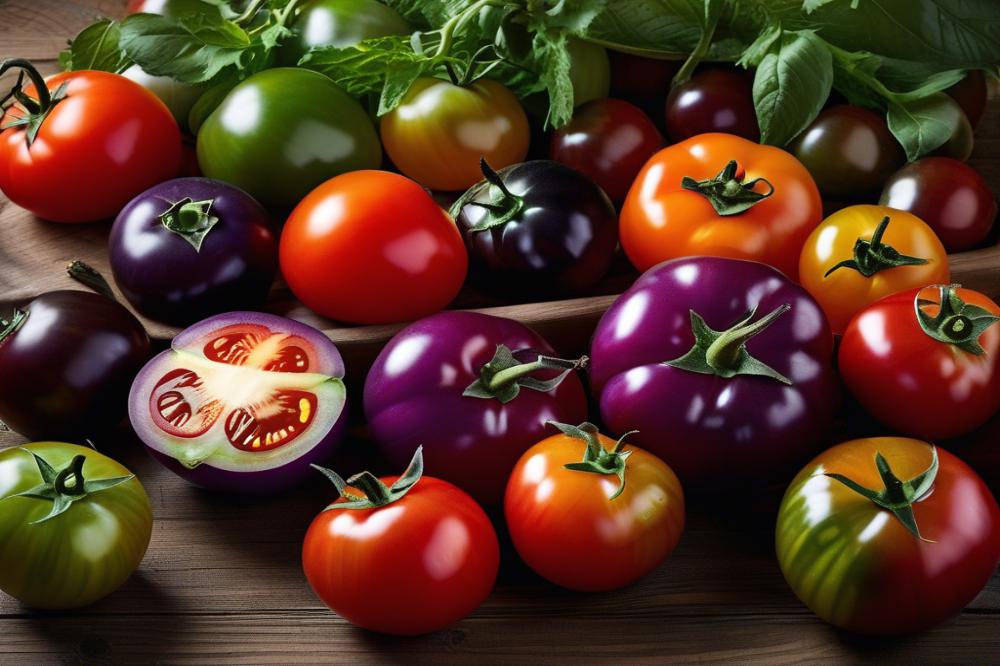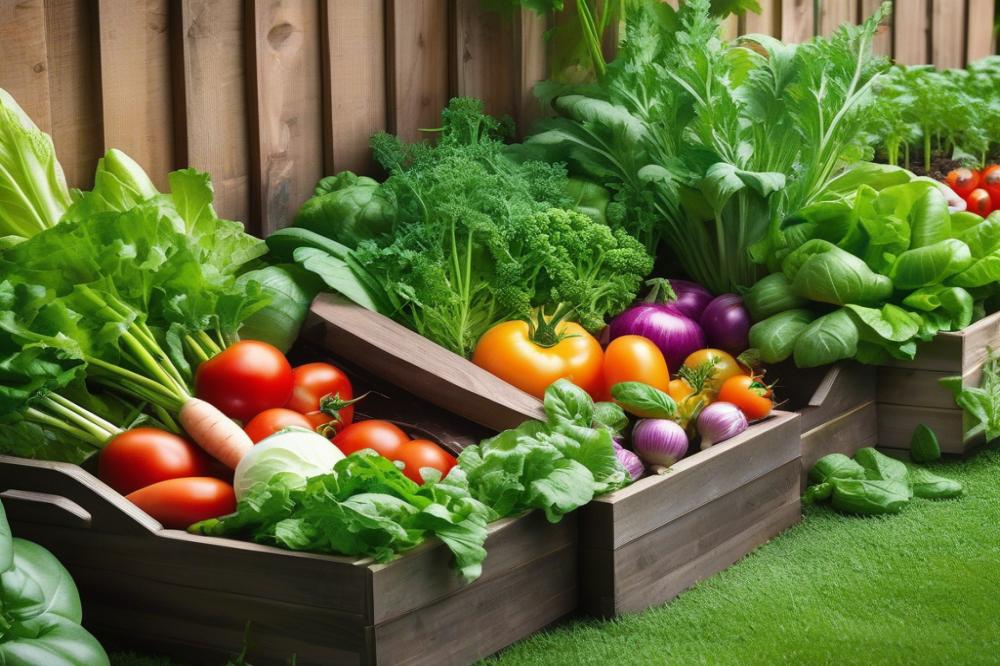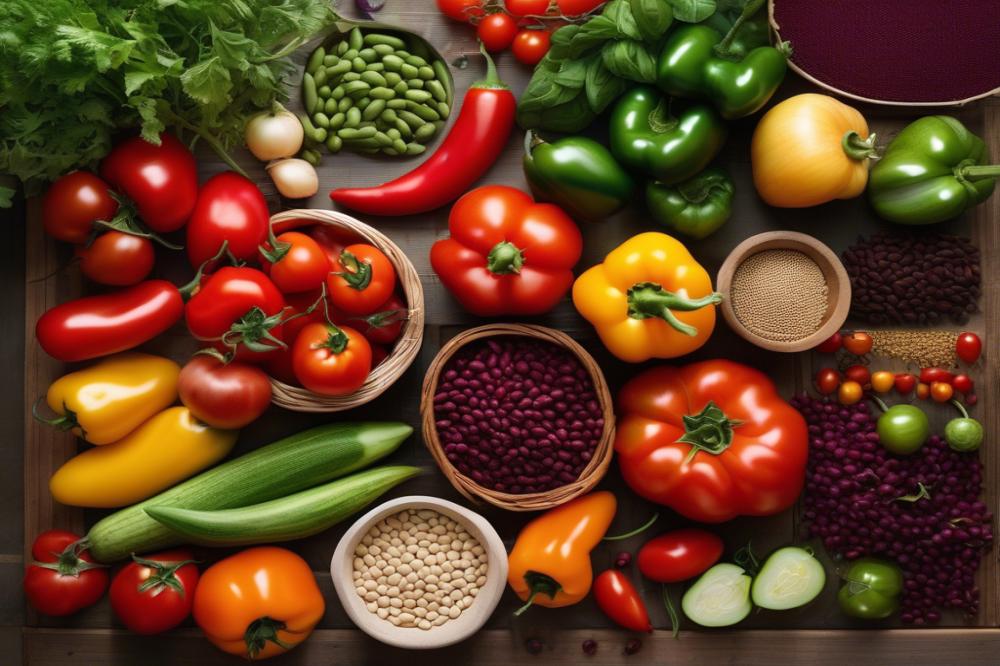Introduction
heirloom tomatoes are treasured by gardeners and chefs alike for their vibrant colors, distinctive shapes, and Rich Flavors. These varieties have been cultivated over generations, often passed down through families. Such tomatoes can transform an ordinary garden into a vibrant oasis. For many, growing heirlooms isn’t just about producing food; it’s about connecting with the past and preserving biodiversity.
Among these beloved varieties, Purple Calabash Tomatoes stand out as a gem. This tomato is known for its unusual flat shape and deep purple hue. The flavor profile is often described as rich and complex, delivering a delightful taste experience. Each bite can evoke memories of sun-soaked summers and wholesome meals shared with family. Their unique appearance and flavor make them a favorite among home cooks.
Beyond taste, there are important health benefits associated with these tomatoes. They are packed with vitamins and nutrients. While people often seek that combination of taste and nutrition, gardening brings an entire experience. In a world leaning towards organic farming, growing such tomatoes at home promotes sustainable agriculture. Learning about growing tips and garden care enhances any gardener’s knowledge. Plus, these plants often display greater disease resistance compared to many commercial varieties, making gardening more accessible.
Culinary uses for heirloom tomatoes are as varied as their colors. From fresh salads to delectable sauces, they can elevate any dish. Homegrown options contribute a richness that store-bought varieties usually lack. Every bite not only supports personal health but also encourages the resilience of local ecosystems. The joy of cultivating Purple Calabash Tomatoes extends far beyond the harvest, enriching both garden and table.
History and Origin of Purple Calabash Tomatoes


Purple Calabash tomatoes are considered heirloom tomatoes, a category known for its rich history and diverse genetics. This variety traces its roots back to the Caribbean and parts of Central America. Gardeners cultivate them not only for their flavor but also for the stories that come with them. Each seed holds a connection to the past, highlighting traditional farming practices and cultural values.
Culinary uses of Purple Calabash tomatoes can vary widely. Their Rich Flavor profile makes them a favorite in various cuisines. Many chefs appreciate how these tomatoes can elevate a simple dish. They work wonderfully in salsas, sauces, and salads. In Mexico, for instance, these tomatoes are often used in traditional dishes like pico de gallo.
Comparing these tomatoes with other popular tomato varieties showcases their special qualities. Most garden varieties are bred for uniformity, while heirlooms bring character. Many store-bought tomatoes may lack the depth of flavor that heirlooms often possess. Other types might be bred for disease resistance, but Purple Calabash excels in flavor and rich history.
Sustainable agriculture practices often incorporate heirloom varieties. They thrive in organic farming systems that prioritize biodiversity. Gardening enthusiasts often share growing tips, emphasizing the importance of proper garden care. These tomatoes, with their unique shape and color, can attract attention among other garden produce. Additionally, the irregular appearance of heirlooms often leads to discussions on food aesthetics and taste.
Growing this tomato variety supports heritage gardening efforts, preserving genetic diversity. As the movement for organic farming grows, so does the popularity of heirloom plants. Many believe that these tomatoes can hold the key to a more flavorful future in our kitchens. Through gardening, farmers and home growers can play a crucial role in maintaining the legacy of this vibrant variety.
Flavor Profile of Purple Calabash Tomatoes


Purple Calabash Tomatoes bring a bold and rich taste that stands out among various tomato varieties. When you bite into one, expect a balance of sweetness and acidity. Their flavor is often described as complex, with subtle hints of spice and earthiness. This complexity is what makes them highly sought after in the gardening community.
Comparing these heirloom tomatoes to others is revealing. For example, while Sweet 100s offer a consistently sweet experience, the Purple Calabash surprises with layered notes. Many find that their diverse flavor profile enhances salads and sauces, making them a favorite for organic farming enthusiasts. Other heirloom tomatoes might deliver a single note, but this variety packs a delightful mix.
Culinary uses are broad due to their exceptional taste. Chefs often prefer them for gourmet dishes because they add a distinct character. Diced, roasted, or blended, these tomatoes shine in the kitchen. They pair beautifully with fresh basil or creamy cheeses. Garden care becomes rewarding when the harvest leads to such flavorful results.
Furthermore, flavor can guide gardening choices. For those interested in sustainable agriculture, selecting tasty varieties is key. Planting Purple Calabash can support culinary creativity, allowing home cooks to experiment with diverse recipes. Interestingly, their unique characteristics also contribute to their popularity in local markets.
Growing tips for these tomatoes include ensuring adequate sunlight and water. Additionally, their disease resistance is a significant advantage. This means less worry in the garden and more focus on enjoying the fruits of labor. By nurturing these plants, gardeners can experience firsthand the connection between flavor and quality. Adding Purple Calabash to your garden promises not only a vibrant harvest but also a flavorful one.
Growing Tips for Purple Calabash Tomatoes


Soil preparation is crucial for growing heirloom tomatoes like the Purple Calabash variety. Start by choosing a well-drained location that receives plenty of sunlight. Amend your garden soil with rich organic matter, such as compost, to boost nutrients. Tomatoes thrive in a slightly acidic to neutral pH range of about 6.0 to 7.0. Testing your soil can help you understand its composition and what adjustments it might need.
Creating ideal growing conditions involves careful attention. These plants prefer warm temperatures, ideally between 70°F to 85°F during the day. Plant them after the last frost when the soil has warmed. Spacing is important; allow sufficient room between each plant to promote airflow. Crowded plants can lead to disease and less flavorful fruit.
Organic Farming Practices
Utilizing organic farming techniques can help cultivate these tomatoes sustainably. Start by using natural fertilizers like fish emulsion or seaweed extract. These options provide essential nutrients without chemicals. Practices such as crop rotation can reduce pest issues and encourage a healthy soil ecosystem.
First, consider companion planting. Certain herbs and flowers can deter pests and boost growth. For instance, planting basil nearby repels harmful insects while enhancing flavor. Regular mulching conserves moisture and suppresses weeds, which is beneficial for tomato varieties. Organic solutions can keep pests at bay, reducing the need for synthetic treatments.
Garden Care for Disease Resistance
Maintaining garden care is vital for promoting healthy plant growth. Watering should be consistent but not excessive. Overwatering can lead to root rot and other diseases. Aim to water at the base of the plants to minimize leaf moisture, as wet leaves can encourage fungal problems.
Observation plays an important role in disease management. Inspect plants regularly for signs of trouble, such as yellowing leaves or spots. Early detection allows for quicker intervention. Using disease-resistant varieties can also support your gardening efforts.
Lastly, proper pruning helps improve airflow and reduces disease risk. Remove suckers that grow between the main stem and branches. This practice helps direct the plant’s energy to produce more fruits with better culinary uses. With the right care, you’ll see healthy plants that thrive and offer a rich flavor profile just waiting to be enjoyed.
Culinary Uses of Purple Calabash Tomatoes
Rich in flavor, these heirloom tomatoes can transform your dishes. Adding them to a simple salad brings a freshness that is hard to match. Cut them into wedges and toss with basil, mozzarella, and a drizzle of balsamic vinegar for a delightful summer treat.
Traditional sauces benefit greatly from the depth of flavor found in these tomatoes. Their meaty texture holds up well during cooking, making them perfect for marinara or homemade pizza sauce. Simmering them with garlic and onions creates a tantalizing aroma, filling your kitchen with warmth.
Gourmet dishes shine with purple calabash tomatoes at the forefront. Think of risotto topped with a tomato confit, or a tart served with goat cheese and roasted tomatoes. Elevate your meals by experimenting with their unique taste.
When considering gardening, incorporating these tomatoes is an excellent choice. With disease resistance, they thrive in a variety of conditions. Growing them organically not only supports sustainable agriculture but also ensures that your family enjoys healthy produce.
Culinary uses extend beyond the kitchen. Freshly picked tomatoes can be sun-dried for later use, adding a burst of flavor to winter dishes. Their versatility covers everything from appetizers to main courses, making them a must-have in any kitchen.
Don’t forget the importance of garden care. Regular watering and proper sunlight will enhance their flavor profile. Sharing these delicious fruits with friends and family can inspire others to appreciate the joys of growing their own food.
Sustainable Agriculture and Gardening Practices
Growing heirloom tomatoes, like the Purple Calabash, plays an important role in sustainable agriculture. By choosing to plant diverse varieties, gardeners promote biodiversity in their fields. Biodiversity helps create a balanced ecosystem that can resist pests and diseases more effectively. With more plant varieties, insects and wildlife can thrive, too.
Organic farming methods contribute to a healthier environment. These practices do not involve synthetic chemicals, which can harm local wildlife and contaminate water supplies. Instead, organic fertilizers and natural pest control create a safer habitat for all creatures. Many gardeners also find that these methods enhance the flavor profile of their crops. Rich tastes often come from plants grown in nutrient-rich soils, nurtured through careful garden care.
Gardening with heirloom varieties encourages the preservation of rare tomato types. Unique characteristics define each heirloom tomato, making them favorite choices for chefs and home cooks alike. Learning various growing tips can aid in cultivating these plants. Good techniques help ensure strong plants that yield delicious fruits.
Additionally, heirloom varieties boast impressive disease resistance. They adapt well to local climates, often outperforming commercial hybrids. This resilience helps farmers and gardeners save seeds for future seasons, further supporting sustainable practices. Crop rotation can add even more benefits by naturally maintaining soil health.
Exploring the culinary uses of Purple Calabash tomatoes might inspire creative recipes. These tomatoes work well in salsas, sauces, and salads. Their rich flavor can elevate ordinary dishes into something special. When growing these unique varieties, gardeners engage in a rewarding practice that contributes positively to the planet.
Final Thoughts on Growing Purple Calabash Tomatoes
Growing Purple Calabash Tomatoes offers a journey into a world of rich flavor and culinary delight. These heirloom tomatoes are not just about their vibrant color; they bring a depth of taste that is hard to find in many modern varieties. With their complex, tangy-sweet flavor, they can elevate any dish from simple salads to gourmet sauces.
Consider the joy of adding this remarkable variety to your personal garden. Cultivating these tomatoes can be a rewarding experience, intertwining the beauty of gardening with the pleasures of cooking. Each plant tells a story, and every bite showcases the vibrant history of this unique crop.
Explore the excitement of gardening with heirloom varieties. These seeds carry traditions from generations past. Furthermore, the act of growing your own food connects you to nature and nourishes both body and soul. Remember, experimenting in the kitchen with your homegrown produce can spark creativity and inspire new family recipes.
In conclusion, the benefits of growing Purple Calabash tomatoes are plentiful. They provide unmatched flavor and a chance to appreciate the art of gardening. Whether you are an experienced gardener or just starting out, these tomatoes can enrich your life in various ways. Dive into the world of heirloom tomatoes and savor the experience it brings!



